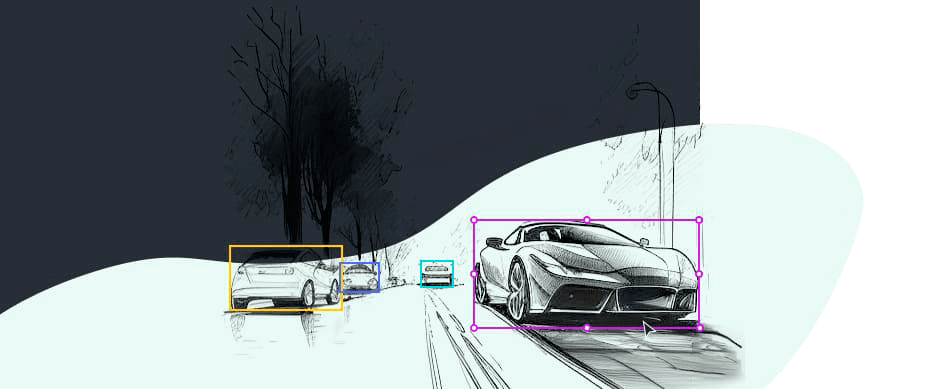Security
Enhance security AI with Keylabs' precision annotation solutions.
As technology advances, the security sector is increasingly relying on data annotation tools to enhance their surveillance systems. With the rise of video surveillance and object recognition, it has become crucial to have accurate and efficient data annotation tools to ensure that these systems function effectively.
Data annotation tools have become an essential component of security systems, with the ability to recognize and track faces, emotions, and objects. The accuracy of these tools is paramount, as they are used to identify potential threats and prevent criminal activity.
Data annotation tools
Some common applications of security AI include:
Video surveillance
With the help of big data analytics, object detection algorithms can be trained to identify a range of objects for efficient security measures. Multi-object tracking (MOT) mechanisms are becoming increasingly popular in many domains, thereby offering more advanced and accurate real-time tracking capabilities.
Real-time video segmentation is another technique used extensively in the security sector for identifying objects accurately, digitizing data faster while providing additional details for better situational awareness.Accurate object recognition ensures that security systems can monitor and analyze complex environments efficiently, minimizing false alarms and enhancing overall security.
Emotion recognition
This biometric technology attempts to analyze a person's inner emotional state through various methods such as facial expressions or speech analysis. The ability to accurately detect emotions could be useful in the development of security measures.
For instance, emotion recognition technology could be used to detect potentially dangerous behavior at airports or other public places by analyzing facial expressions for signs of anxiety or hostility.
Emotion recognition offers vast potential benefits for security sectors and beyond; however, accuracy of annotated data remains key so that there isn’t room for misinterpretation.
Face recognition
Facial recognition is a technology that utilizes cameras and software algorithms to analyze and identify human faces. The data produced by facial recognition systems can also be valuable for cyber threat actors, making data security and privacy primary concerns.
To ensure the accuracy of facial recognition models used in security AI, it is imperative to have absolute precision in the annotation of the dataset. This process requires annotators to correctly identify key features of the face, such as eyes, nose, mouth area with intricate details and time-consuming efforts.
Object tagging & tracking
Object tagging and tracking are crucial elements in the development of security systems powered by artificial intelligence. Accurate image and video annotation is essential in training models to detect objects of interest and distinguish them from other objects.
Keylabs provides video annotation and object interpolation tools that enhance dataset accuracy. To ensure precise labeling of data by categories, developers rely on annotations using multiple methods like bounding boxes, polygons or points depending on their specific needs.
Key features
There are several key features that a robust data annotation tool for securitys should possess:

Versatility
The tool should be capable of handling different types of data, including 2D and 3D images, videos and point clouds generated by LiDAR sensors.
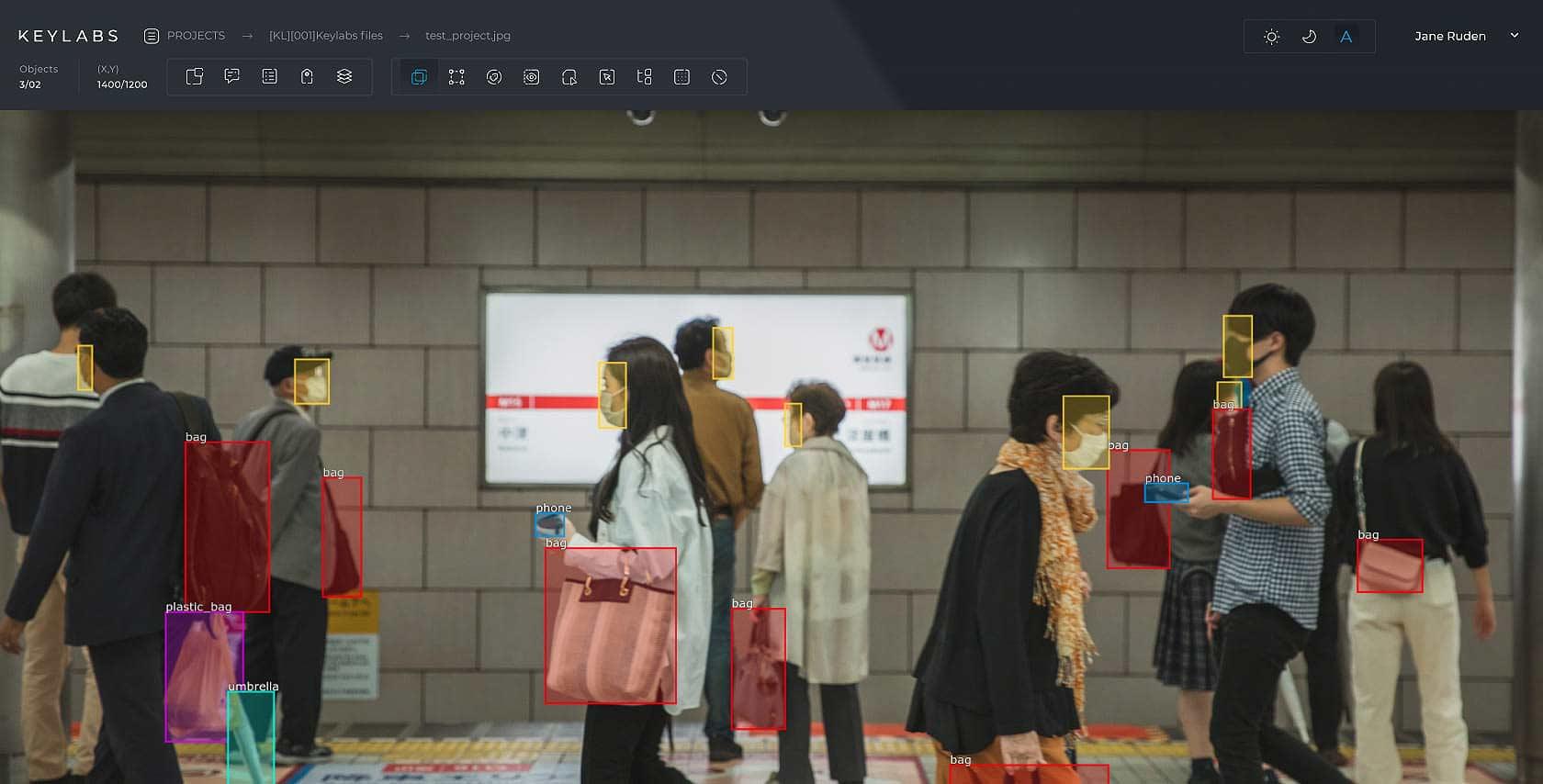
Precision
High-quality annotations are crucial for the accuracy of AI models in aerial management and disaster management. The tool should enable precise labeling of objects and features, minimizing the chances of misinterpretation.

Scalability
A data annotation tool should be scalable to handle large datasets efficiently, streamlining the annotation process and reducing the time required for model training.
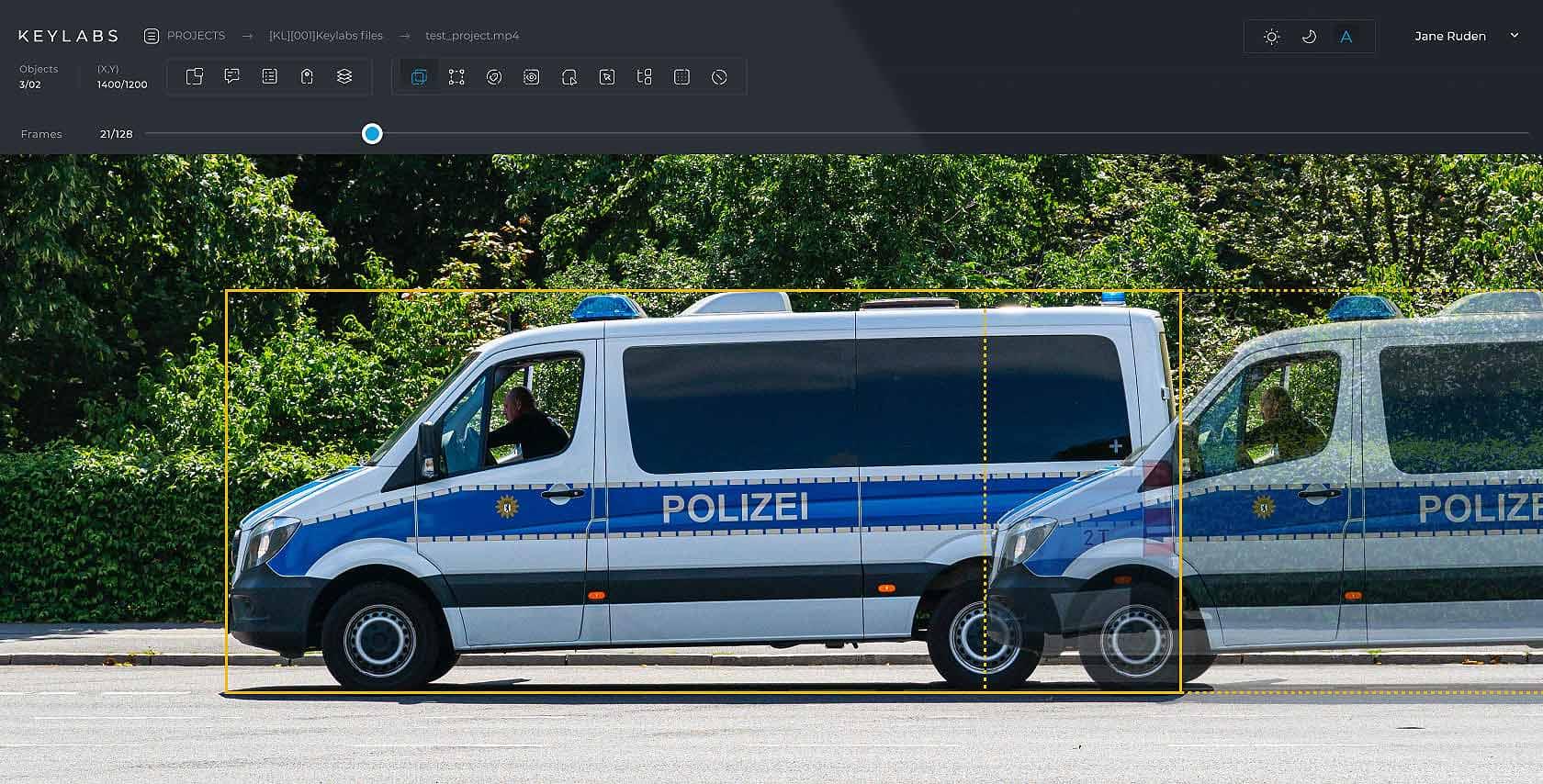
Automation
AI-powered data annotation tools can leverage machine learning algorithms to automate parts of the annotation process, speeding up the workflow and increasing overall efficiency.
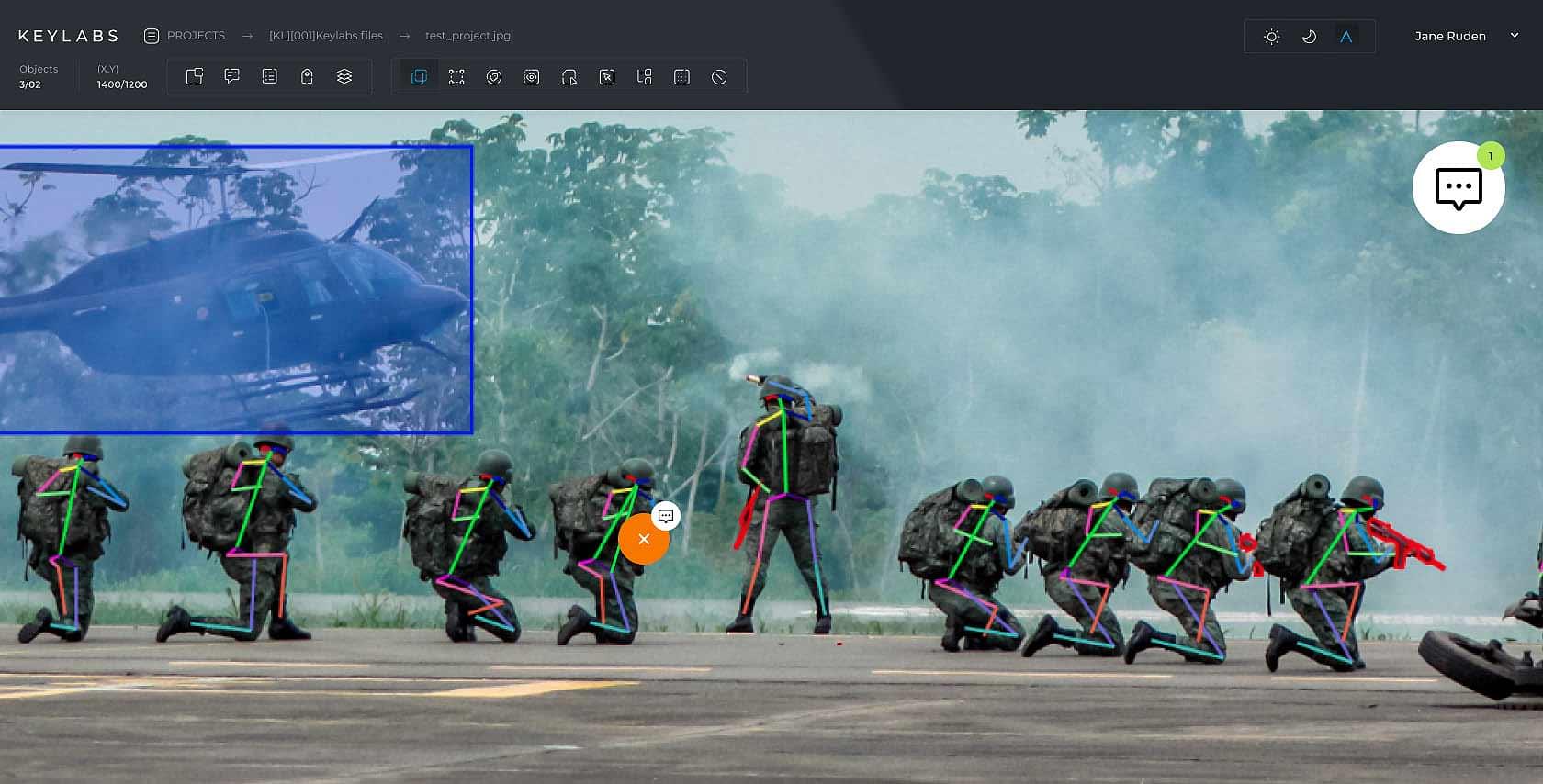
Collaboration
A good data annotation tool should facilitate collaboration among team members, enabling multiple annotators to work together on the same dataset. This ensures consistency in labeling and accelerates the annotation process.
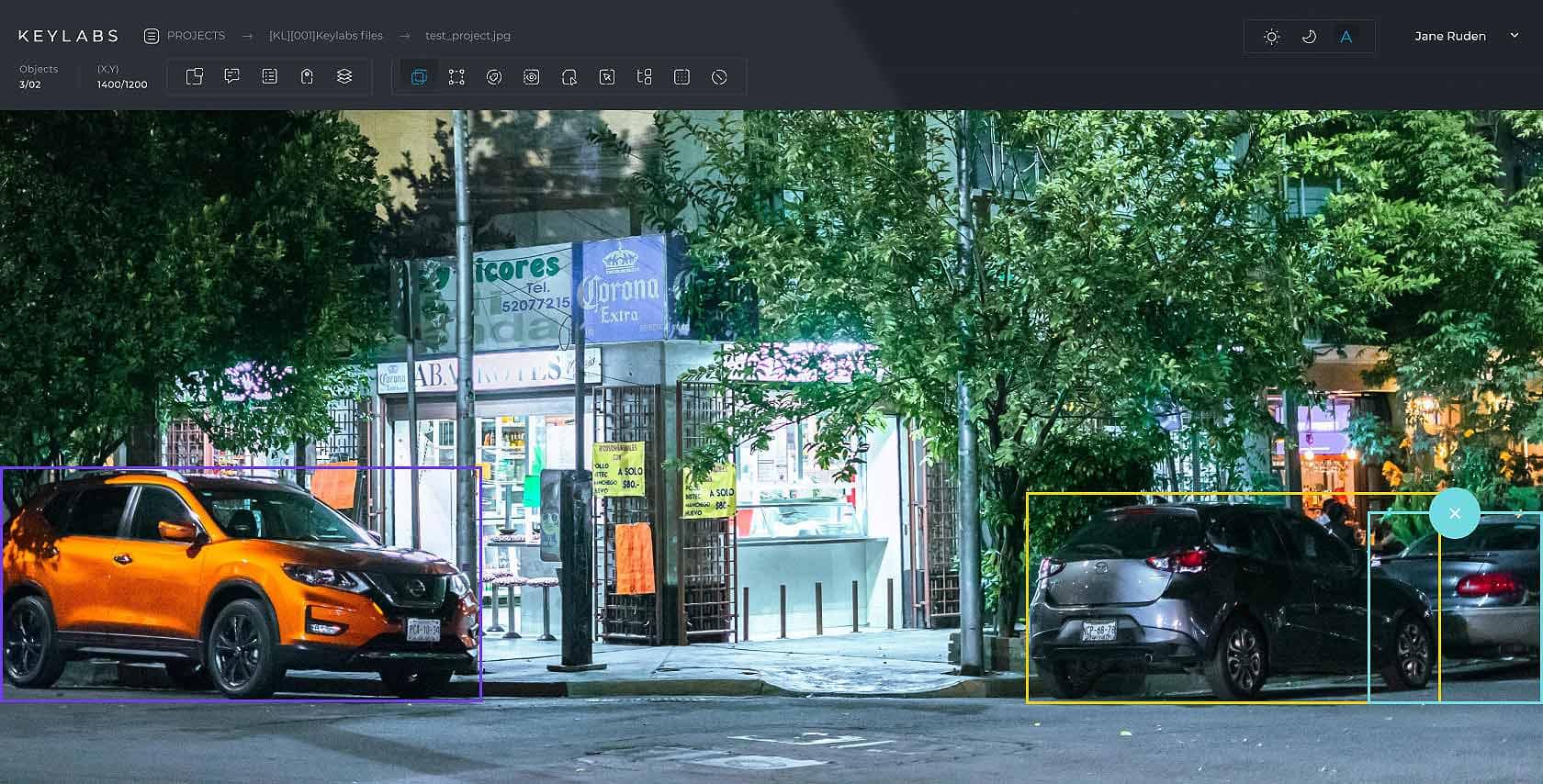
Quality control
To ensure the highest level of accuracy, the tool should have built-in quality control features that allow for easy review and verification of annotated data. This helps maintain data integrity and improves the overall performance of the AI models being trained.
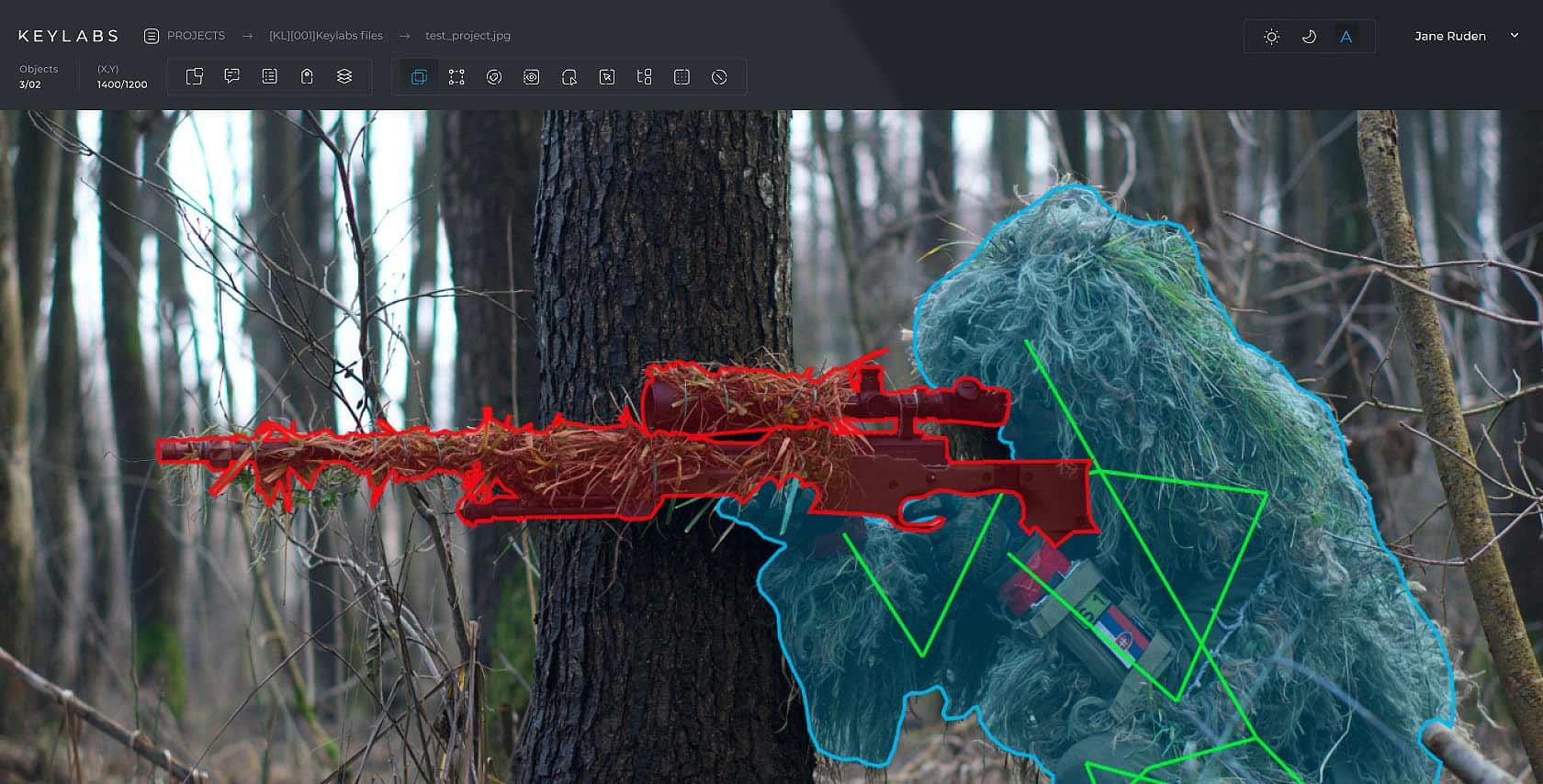
Customization
The annotation requirements may change or become more complex. A flexible data annotation tool should allow for customization to meet the unique needs of each project and adapt to new challenges in the industry.
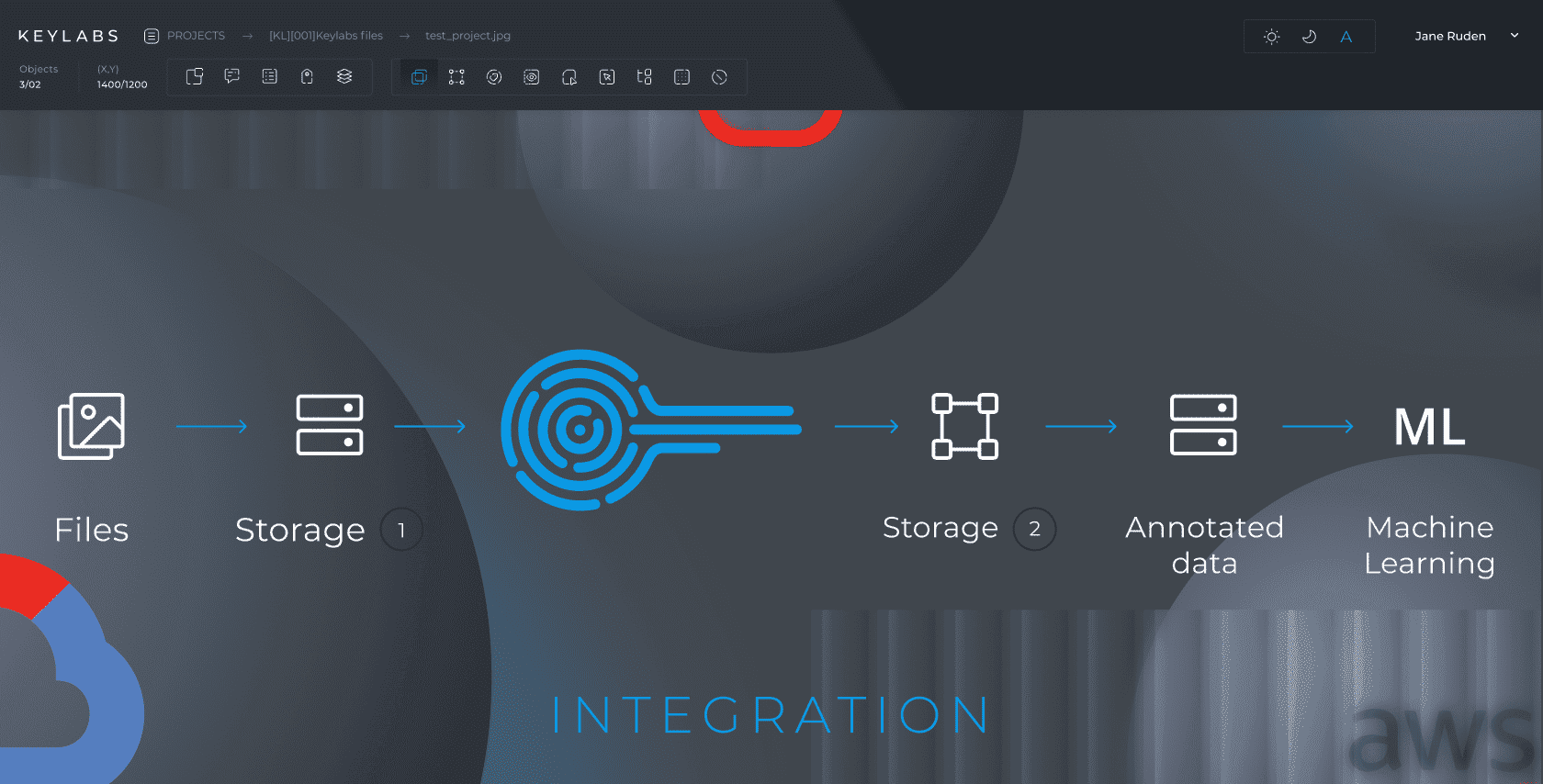
Integration
The data annotation tool should be able to integrate seamlessly with various machine learning frameworks and platforms, making it easier for developers to use the annotated data for model training and evaluation.

Data Security
A data annotation tool must prioritize data security and privacy, ensuring that the information is protected at all stages of the annotation process.
Versatility
Precision
Scalability
Automation
Collaboration
Quality Control
Customization
Integration
Data Security
Use cases
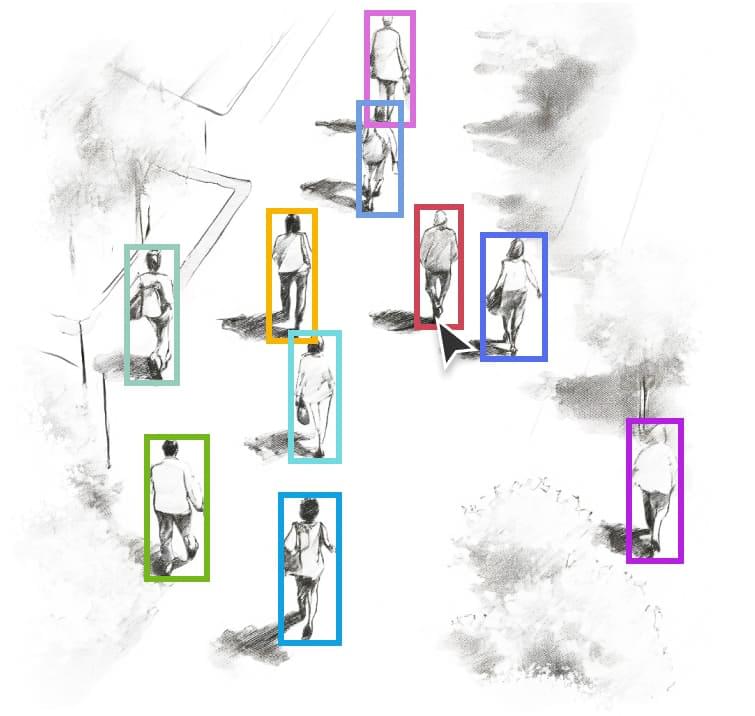
Video surveliance & object recognition
Keylabs excels in video surveillance and object recognition, enhancing security systems with precise annotations for reliable monitoring.
Emotion recognition
In emotion recognition, Keylabs provides nuanced annotations, vital for advanced security systems and situational awareness.
Face recognition
Keylabs' detailed annotations bolster face recognition technology, ensuring high accuracy for secure identification in security applications.
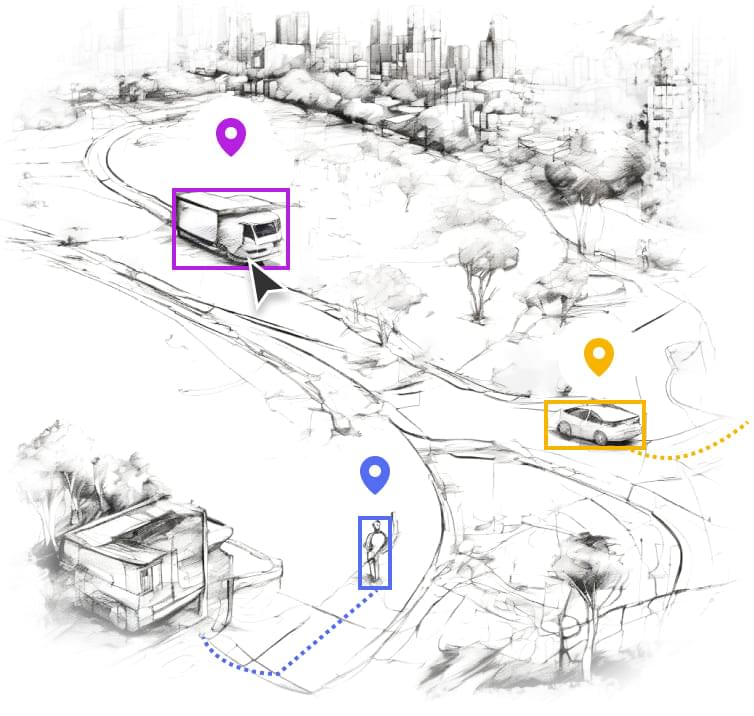
Object tagging & tracking
For object tagging and tracking, Keylabs delivers exact annotations, crucial for monitoring and maintaining security in various settings.
Starter’s guide


Data security
Using the Keylabs annotation tools comes with a commitment to data safety. Keylabs employs a range of security measures to protect valuable and sensitive data. This includes comprehensive infrastructure security if you choose to access Keylabs through the cloud. Alternatively, Keylabs can be installed on premises, guaranteeing you total control over access. We will continue to emphasize data protections as a priority by utilizing a diverse array of security measures and industry best practices.
Top Features
Keylabs is created as a platform that incorporates state-of-the-art, performance oriented tools and processes.
ML assisted data annotation
ML assisted data annotation
Keylabs is a streamlined data labeling platform with AI-enhanced annotation.
Tailored for easy Integration with any client model and time & cost efficiency.
Keylabs’ advanced algorithms provide quick, accurate data prep for superior model training.
3D tool
3D tool
Keylabs is a super-fast tool, soaring through Lidar files at ultra speeds. It seamlessly handles all file formats, ensuring a consistent, efficient workflow regardless of file complexity.
High performance video annotation
High performance video annotation
With the Keylabs platform's technical and software capabilities, video annotation is highly accurate (precision of up to 99,9% depending on project needs) and fast. Thanks to the geolocation adaptation of servers, even big-sized videos are loaded and processed quickly.
Magic wand
Magic wand
Speeds up the annotation process by automatically detecting closed shapes of the same color or color gradient in a highly precise manner.
Object interpolation
Object interpolation
Object interpolation in the data annotation process is used to accelerate the annotation of objects across a sequence of frames in video annotation.
Annotators label the shape of an object in the first and the last keyframe of desired sequence and the object interpolation algorithm automatically generates the labels for the object in the intermediate frames.
It saves time and also ensures consistent labeling across frames.
A-Z order
A-Z order
Objects can be placed on different leveled layers, which allows operators to correctly detect and work with those objects and their boundaries.
Multilayer annotation
Multilayer annotation
Multilayer annotation is a complex yet valuable process in data annotation where different types of materials are layered onto a single item.
This allows the addition of multiple, diverse annotations to a single piece of data such as an image or video frame.
Each layer might provide a different dimension of information, enriching the dataset with multiple facets of detail.
This allows the addition of multiple, diverse annotations.
Object linking
Object linking
Object linking in the data annotation process is a valuable function that connects different instances of the same object across multiple frames or images.
For example, in video annotation, an object appearing in different frames is linked throughout the video, ensuring the continuity and consistency of the annotation.
Hierarchical atributes
Hierarchical atributes
The attribute is a type of tag that can be applied to a class or property to provide metadata about it.
Using attribute hierarchies, it is possible to define structures of metadata for each item in dataset.
It is achieved by using dependent attributes, which allows logical forming of metadata information for frame or object individually.
Workflow and task distribution
Workflow and task distribution
Workflow includes custom stages of one of 4 project stage types: annotation, verification, miscellanious and final.
Good workflow and task distribution ensure that the data annotation process is smooth, efficient and completed within the required timeframe.
Data management

Data management
Data management in the context of the data annotation process is about strategically handling and organizing the data throughout its lifecycle.
Effective data management helps to uphold data integrity and ensure that the final annotated data is accurate, consistent and ready for use in AI and machine learning projects.
Attributes interpolation
Attributes interpolation
Attributes metadata can also be interpolatable (changed) between the frames. For instance, In a self-driving car video annotation, this can label a car as a "sedan" going "30 mph" in the first frame & automatically estimate its type & speed in subsequent frames until the next key frame. This eliminates the need for manual annotation in each intervening frame, saving time & effort.
Annotation types
Keylabs gives developers access to a full suite of annotation techniques:
Bounding Box
A rectangular box defined by coordinates that encapsulates an object of interest within an image
Oriented bounding box
A rotated rectangle that tightly encloses an object, accommodating its orientation and shape more precisely than a standard bounding box
Polygon
A closed plane figure made up of several line segments that are joined together, used to define irregular shapes in an image
Points
The Point Annotation Tool places dots on images or videos, ideal for highlighting details like facial features, expressions and body postures
Lines & Multilines
A data annotation tool used to draw single or multiple interconnected lines on images, capturing linear features or paths
Skeleton
A thin version of a shape, representing its central structure and providing a simplified representation of its form, commonly used in understanding object morphology or structure
Instance Segmentation
The process of classifying and delineating each individual object instance in an image
Semantic Segmentation
The classification of each pixel in an image based on its semantic category, without distinguishing between individual object instances
Bitmask
A binary representation where each pixel value indicates whether it belongs to the object (1) or the background (0)
Cuboid
A 3D rectangular prism annotation, often used to represent objects in spatial dimensions
Mesh
A collection of vertices, edges and faces that define the shape of a 3D object in space, often used in 3D modeling and computer graphics
3D Point Cloud
A collection of data points in a three-dimensional coordinate system, representing the external surface of an object
Custom
A tailored data annotation tool designed to cater to specific annotation needs not covered by standard tools


